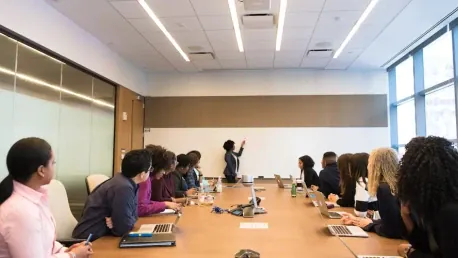It’s no secret that employees historically hate meetings. So much so actually that 46% would rather do anything else than attend a status meeting, according to a survey. In fact, 6% said they’d rather move to Antarctica, 8% would endure a root canal, while 17% would prefer to watch paint dry than be stuck in a meeting.
But why do meetings get such a bad rep?
According to the survey, which was conducted online within the United States by Harris Interactive on behalf of Clarizen, “59% of information workers say preparing for a status meeting often takes longer than the meeting itself”, and “55% of information workers spend one to three hours attending status meetings for general purposes”.
Now that you know how your employees actually feel about status meetings, here’s a couple of things you can do to make them more enjoyable, productive and efficient.
First Thing’s First – Do You Even Need to Meet?
What’s worse than a meeting that runs too long? One that has no actual purpose. Unless a meeting is an absolute necessity, find other ways to communicate with your employees – emails are quick and effective, they don’t require any preparation, and your employees will be happy to read whatever it is you have to say from the comfort of their own chair.
Some simple guidelines to keep in mind when deciding whether a meeting is actually relevant or not:
- Identify the action item of the meeting: is it decisive or informing?
- The size of the meeting: have you heard of the 2 pizza rule? No? Then listen up, because this is a total game-changer. It was Jeff Bezos, the CEO of Amazon, who famously said that “if a team couldn’t be fed with two pizzas, it was too big”. Mind-blowing, right? Moving on…
- Is the meeting a solution to a problem? In other words, is the meeting necessary to reach an important decision? Does it require that you and your teams brainstorm to gather new information for a product or service? If your answer is no, then you don’t need a meeting.
- Do your employees need the meeting to successfully complete certain tasks? Will suspending or canceling the meeting negatively impact their ability to perform those tasks? Then by all means, go ahead and convene the meeting.
Keep Them Short & Concise
According to Clarizan’s survey, “almost four in ten employed American adults believe status meetings are a waste of time”. And if you gather a team of 12 people in a one-hour “waste of time” meeting, that’s a collective waste of time of 12 hours.
A productive meeting is one that ends on time, or even early, and doesn’t leave your employees wondering why they’re there. After all, time is money. And if you spend more time in meetings and organizing them, you’ll have less time to get the rest of your work done.
Take TED talks for instance: expert talks translated into 90 languages held across 145 countries, no longer than 18 minutes, that keep listeners coming back for more. Why 18 minutes? “It’s long enough to be serious and short enough to hold people’s attention. […] It has a clarifying effect. It brings discipline”, said Chris Anderson, TED curator.
Also, when organizing a meeting, you should stick to a schedule – start at a specific time, and end during a certain time. Even if you don’t manage to go over everything you had planned, you should still end the meeting and then come up with a better plan for the next one.
Provide a Clear Agenda
What’s worse than attending a meeting that has no set agenda? Nothing. When meetings lack a sense of direction, participants tend to talk for hours without really accomplishing anything.
To make the meeting more effective, you can distribute the agenda before the meeting begins to communicate the topics ahead of time, and make it clear to people what’s the purpose of the meeting, the desired outcome, your expectations of them and so on. This helps set the group’s incoming level of knowledge and ensures the meeting time is more actionable, rather than purely informative.
Make Them Fun
The cure for boring meetings? Humor. Insert a few jokes during your speech or presentation, maybe a few anecdotes. If that’s too much, then try and focus on the first and last five minutes of the meeting – open strong, close strong.
“If you want energy and engagement from your team, you need to embody those qualities while they walk through the conference room doors. We are highly empathetic creatures. Within a tenth of a second, your team gauges and mirrors your mood and energy levels. If you have a dark cloud over your head, the energy in the room sinks and the meeting drags. If you are positive and energetic, the meeting will be more lively and productive” according to entrepreneur.com.
Humor will also help you lessen the tension in the room, make people more comfortable, and it will make the meeting seem shorter (which is always a plus, let’s be honest).
Last But Not Least – Send a Post-Meeting Recap
It’s far too easy to forget everything once you move on to your next task. According to German psychologist Hermann Ebbinghaus, “within a month’s time, a person’s brain only retains about 2–4 minutes’ worth of information from an hour-long lecture”.
Recaps, which you can send in the form of a follow-up email right after the meeting, will help your employees better retain the information discussed, while providing an opportunity to highlight key takeaways.









